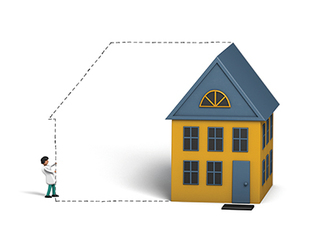 loading
loading
Yale vs Covid Richard BorgeView full imageFamily By Anna Reisman ’86 When a close relative who lives a couple of towns away called me in mid-March to ask about a sniffle, I said, it’s just a cold. She and her husband and their daughter (abruptly back home from grad school) had been puttering around their house in those early unsettled weeks, quarantining, studying, writing, Zooming, cooking, binge-watching BBC miniseries. She hadn’t been going out much, just to CVS or the supermarket. It seemed like a straightforward cold at first, some fatigue, with a hint of unrelated back pain. Her doctor prescribed antibiotics over the phone just in case it was bacterial pneumonia, which she’d had once or twice before. Wishful thinking, in retrospect, but back then, it was hard to believe that COVID would hit the New Haven area so soon—and almost unthinkable that COVID would hit someone close to me. Her cold symptoms were replaced by a severe headache and diarrhea, and now the fatigue was overwhelming, and she was coughing a lot, and it was no longer possible to deny what we were all denying—that this actually might be COVID-19. I knew their house, and so I closed my eyes and imagined myself at the round table in their kitchen, on the white couch in the living room. I conjured up the location of each bedroom and bathroom. I pictured her relocated to the guest room, which is downstairs, with its own bathroom across the hall. I pictured the other two moving around the spaces upstairs, occasionally descending to the sick room with chicken soup or scrambled eggs, a fresh glass of ice water. I visualized daughter and father wearing masks, sliding their gloved hands along the banister, and I advised them to wash their hands before retrieving the dirty dishes and again after, then to wipe down every high-touch surface—the banister, doorknobs, tabletops, backs of chairs, bathroom faucets. Since mid-March, these visits have been via telephone, and almost every person I speak with is concerned about whether their symptoms could be COVID-19. People describe fevers, cough, muscle aches; some feel tired; some are short of breath. Some have conditions that put them at higher risk, like diabetes and obesity. Some work in nursing homes or supermarkets, some are retired, some have lost their jobs. Everyone is scared. There’s a lot I can do: I can send people for testing; I can suggest what to do for particular symptoms. I can explain the difference between quarantine and self-isolation and when it’s safe to go back to work. I can urge them to buy a thermometer (not so easy these days) or a pulse oximeter (also not so easy these days). I can ask about the spaces they inhabit, how many rooms there are, and who spends time where, and what parts of the space are shared, and whether there are doors that can be closed between rooms. I can do almost all of the things that I did for my relative, when she was sick. Until the day that I realized none of that mattered, that I’d missed something big. Her husband was still using his home office—a space immediately adjacent to the sick room, right across the hall from the contaminated bathroom. He’d kept working there even after his wife had moved to the guest room. He thought it was safe if the door was closed. Then their daughter developed a runny nose, then that same terrible fatigue. Then again, all three recovered. I was fortunate, far more fortunate than too many of the nurses and doctors and other health-care workers fielding similar calls from family members, offering advice, trying to prevent the virus from digging in. You wipe surfaces, wash your hands, wear a mask, keep a distance. And then you cross your fingers. Primary care doctor Anna Reisman ’86 directs Yale’s Program for Humanities in Medicine.
|
|